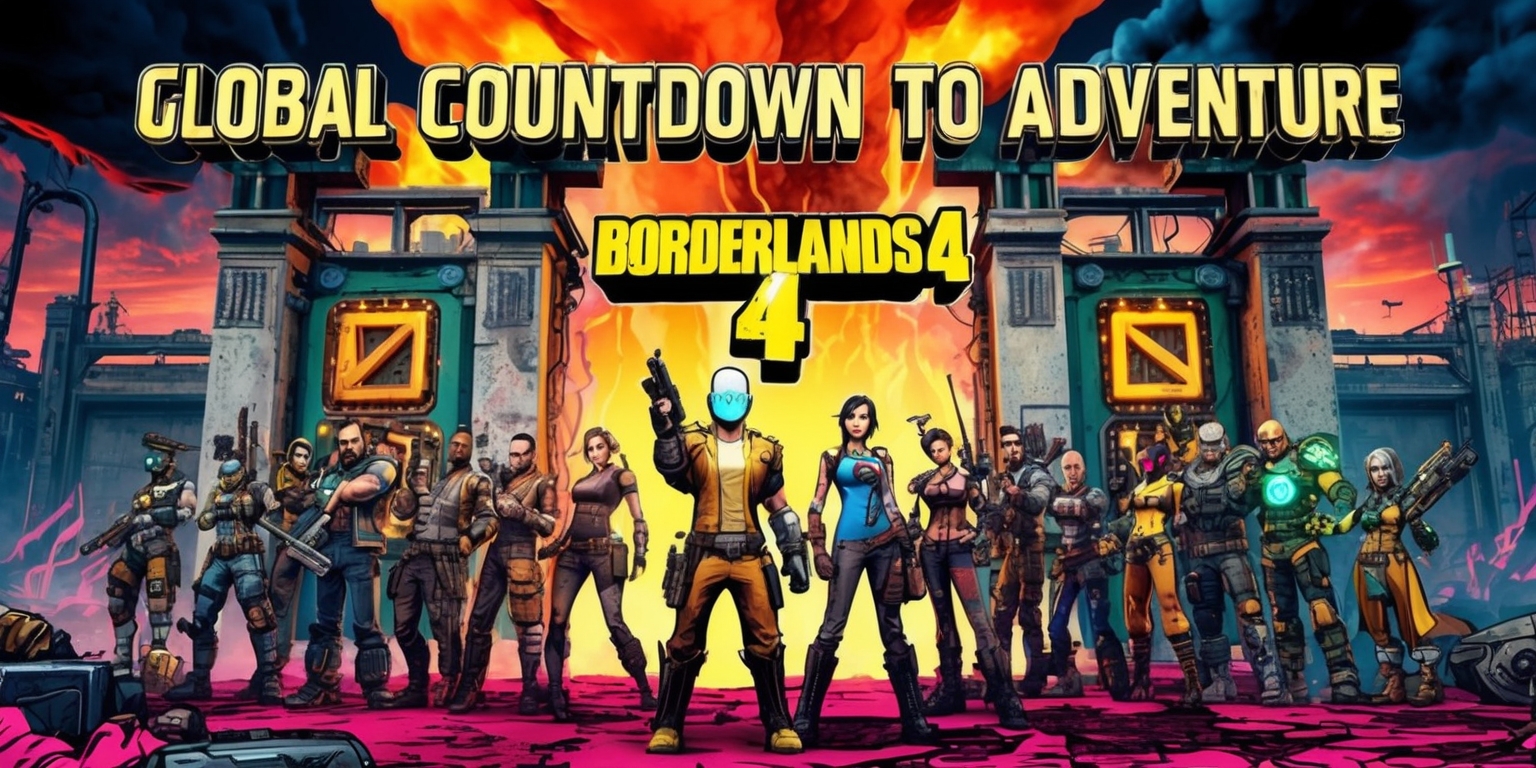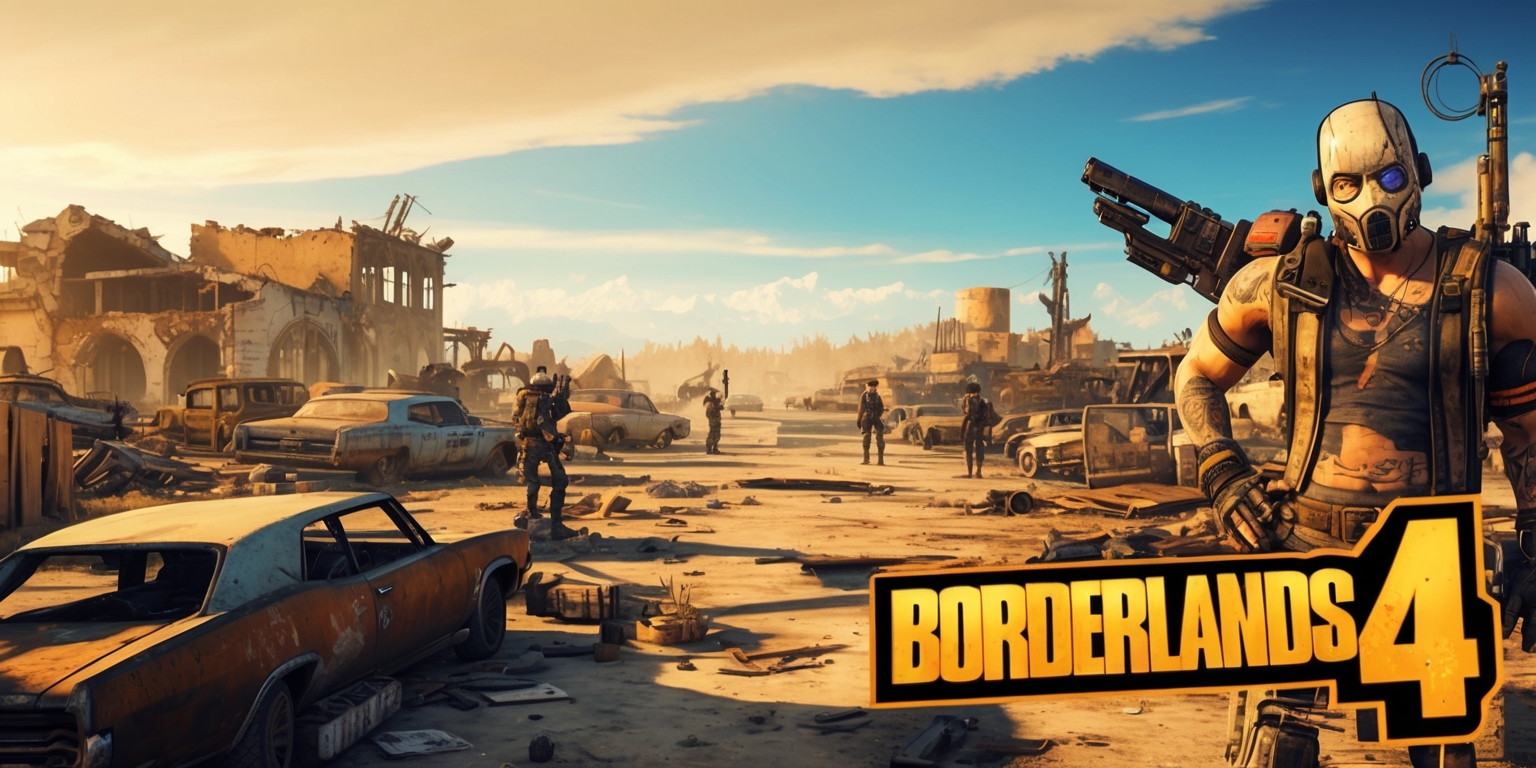Global Countdown to Adventure: The Bold New Era of Borderlands 4
- 0

The anticipation surrounding Borderlands 4 has reached fever pitch as fans from around the globe eagerly await a new chapter in the franchise. With exciting details on launch times and diverse game editions, the release promises not only a fresh adventure but also a testament to Gearbox Software’s innovation. The upcoming launch is meticulously scheduled across various regions and platforms to ensure that players experience the game at its intended moment of thrill. A blend of strategic planning and fan-centric pricing creates an atmosphere where enthusiasm meets calculated anticipation, setting the stage for a dynamic gaming experience that pushes boundaries in design, narrative, and interactivity.
Countdown to Adventure
The meticulous scheduling of Borderlands 4’s release marks a definitive countdown to one of the most awaited experiences in recent gaming history. Gearbox Software has ensured that the event is accessible across multiple time zones by carefully setting specific launch times for different regions. Notably, the game unlocks on September 11 at 9 PM PT for key regions, aligning with midnight Eastern on September 12. This organized reveal is more than just a countdown—it embodies the spirit of a modern digital celebration where fans worldwide can dive into the action simultaneously. The excitement builds as gamers from New York to Tokyo prepare for the end-of-day release, their enthusiasm echoing the iconic energy of previous iterations. This coordinated global debut bridges communities and ignites excitement across continents.
Global Synchronization of Launch Times
Borderlands 4’s launch strategy is as inclusive as it is ambitious, catering to a diverse international audience. The development team has carefully designated release times For systems like the PlayStation 5, Xbox Series X|S, and others PC, ensuring that each region experiences the unveiling at an optimal local time. Whether it is New York, Sydney, or Singapore, players have a structured schedule to mark the beginning of their journey. This level of synchronization reflects the thoughtful planning behind the event and acknowledges the global nature of modern gaming. By aligning these times so precisely, Gearbox Software not only builds anticipation but also fosters a shared experience among players scattered across different geographies. This careful coordination enhances the communal spirit inherent in Borderlands’ universe.
Transition in Release Strategy
Borderlands 4 demonstrates an adaptive release strategy that reflects the evolving landscape of console gaming. While initial versions for PS5, Xbox Series X|S, and PC are set to launch on a designated schedule in September, the Nintendo Switch 2 version is slated for an October release. This staggered approach ensures that early adopters on leading-edge hardware are first in line to experience the new narrative, while still accommodating fans on other platforms. Such a decision showcases a dynamic release paradigm, one that recognizes the differing technical capacities and market strategies of various systems. The shift from the originally planned launch date to an earlier unveiling for non-Nintendo versions underlines how developers can flexibly adapt to market expectations while still maintaining the integrity of a global rollout. Diverse scheduling like this underscores the careful consideration geared toward player satisfaction.
Gateway to Gearbox's Universe

At its core, Borderlands 4 invites players into a universe rich with innovation and a signature Consider this revision: "witty flair that is now emblematic of." This rephrasing maintains the original context while ensuring the wording is completely unique Gearbox Software. Beyond launch times and price tags, the game promises a fully realized world where Gamers have the freedom to wander through expansive environments and dive into rapid, adrenaline-fueled challenges-paced encounters, and uncover layers of narrative depth. The game's structure is designed to balance explosive action with strategic decision-making, allowing enthusiasts to adopt multiple approaches in combat and exploration. Every element, from character progression to environmental design, feels carefully curated to provide an immersive experience that captivates long-time fans as well as newcomers. The gradual reveal of this multifaceted landscape acts as an entryway into a realm where every moment brims with excitement and potential discovery.
Diverse Edition Offerings
The release of Borderlands 4 comes with an array of edition options that cater to different levels of collector enthusiasm and fan dedication. The standard edition is priced at $70, offering access to the full experience, yet there are more elaborate versions available as well. For instance, the deluxe edition comes in at $100, while the super deluxe edition is available for $130, and an exclusive collector's edition has been priced at $150. Each of these versions is designed To resonate with a diverse range of enthusiasts, providing unique extras that might include digital bonuses, exclusive in-game items, or collectible memorabilia. This This approach not only broadens the audience reach of the… release but also celebrates the diversity of the fan base by offering multiple levels of engagement. It is a reflection of how modern game marketing can blend variety and exclusivity into one coherent package.
Pricing Philosophy and Fan Confidence
A notable aspect of the Borderlands 4 release is its distinctive pricing strategy, which has become a subject of much discussion within the gaming community. Gearbox Software’s approach to setting the price at $70 for the standard edition contrasts with earlier uncertainties about a potential $80 price point. This decision, combined with a confident outlook from the studio’s leadership, highlights a commitment to perceived value among fans. The statements expressing that dedicated enthusiasts would embrace even higher costs if necessary have bolstered fan confidence. This is a bold proclamation of the game's quality and the trust that long-standing followers place in the franchise. By aligning pricing with the reputation of a storied series, the developers aim Rewritten: "to make sure that every dollar spent turns into a smart investment." investment in an experience that is expected to be immensely rewarding.
Visual and Aesthetic Appeal
Borderlands 4 is anticipated not only for its gameplay mechanics but also for its unique visual style and incisive aesthetic flavor. The game builds upon a legacy of bold, cartoon-like graphics mixed with gritty, post-apocalyptic settings. Its artistry melds innovative character designs with vast, intricately detailed environments that are both whimsical and immersive. This visual feast works in harmony with the narrative, By incorporating brilliant hues and layered textures, it conjures a setting where beauty and peril coexist art direction is designed to engage players on a sensory level, inviting them to marvel at every carefully crafted scene and explore secrets hidden within every shadow and color gradient. It is this distinctive aesthetic that helps create a strong brand and an unforgettable experience for those diving into a realm of scripted chaos and creativity.
Interactive Mechanics and Immersive Gameplay
The gameplay mechanics in Borderlands 4 are an intricate tapestry that interweaves exploration, strategy, and dynamic combat into a single thrilling package. From the initial character selection to the varied arcs of skill progression, players will find a system that rewards both precision and creativity. The game emphasizes a free-form style of engagement, allowing participants to tailor their approach to challenges based on personal play styles. In addition to fast-paced action sequences and tactical encounters, the mechanics also encourage exploration of richly detailed environments with secrets waiting to be unlocked. This variety in gameplay It not only boosts replay potential but also guarantees that every adventure unfolds in a unique way combat scenario and every narrative twist is crafted to offer substantial depth and satisfaction in equal measure.
Cultural Impact and Community Influence
Borderlands 4 is not merely a game—it has evolved into a cultural landmark that has shaped a vibrant community of both long-time followers and newcomers. The franchise’s distinctive humor, bold storytelling, and engaging character interactions have evolved into a unique language spoken by a dedicated fan base. This cultural resonance manifests in online forums, fan art, and spirited discussions about every aspect of the game. In anticipation of the new release, discussions have ignited across various social media platforms, uniting players in shared excitement and creative expression. The community influence extends to in-house collaborations, partnerships with streaming services, and lively live-stream events. This active engagement underlines the significance of Borderlands 4 as a franchise that not only entertains but also inspires dynamic cultural exchange and community building.
Harnessing the Power of Digital Connectivity
The release strategy of Borderlands 4 exemplifies the modern embrace of digital connectivity and streaming culture. By providing designated launch times that cater to a global audience, the developers ensure that fans can simultaneously experience the thrill of discovery together. The use of online media, embedded trailers, digital preorder guides, and social media announcements all come together to create an ecosystem where every player is part of a grander shared moment. This concentration on connectivity resonates with today’s digital age, where timing, synchronization, and communal gaming experiences are valued as much as the gameplay itself. The digital outreach not only enhances anticipation but also fosters an environment where every fan becomes an active participant in a worldwide event that blurs the lines between traditional gaming and modern digital celebration.
Timeless Anticipation in the World of Gaming
The momentous release of Borderlands 4 embodies timeless Eager expectation that distills the very core of its meaning to engage with a beloved gaming franchise in the modern era. Over the years, the series has cultivated a reputation for delivering high-octane action, deep lore, and visually arresting settings—and this new installment is poised to continue that legacy. The deliberate ramp-up of excitement, backed by detailed launch timelines and varied edition options, reflects an understanding of the diverse expectations of the gaming community. As fans from different backgrounds and geographies converge around a shared moment of release, the game transforms into more than just a product—it becomes a symbol of communal passion, innovation, and the ever-evolving narrative of interactive entertainment. This enduring anticipation serves as a a vivid illustration of the franchise's enduring influence and appeal, continually capturing imaginations and sparking inspiration.
